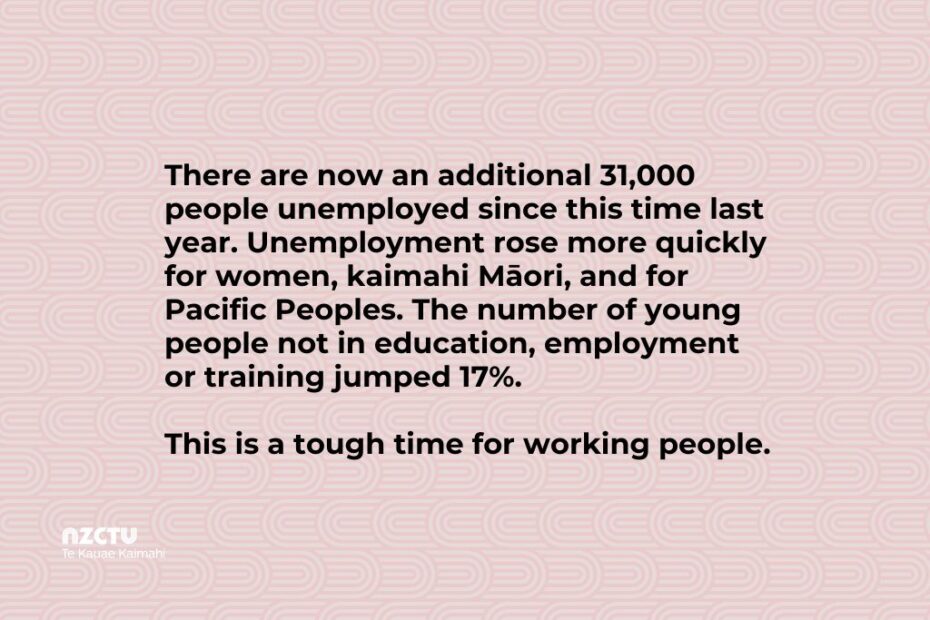NZCTU Economist Craig Renney said new data released by Statistics New Zealand shows the need for Government to act now, with unemployment rising from 3.4% to 4.3%.
“There are now an additional 31,000 people unemployed since this time last year. Unemployment rose more quickly for women, kaimahi Māori, and for Pacific Peoples. The number of young people not in education, employment or training jumped 17%. This is a tough time for working people,” said Renney.
“Unemployment is a lagging indicator, meaning changes in the economy take time to fed through to labour market. The weakness in the economy is catching up with workers. The unemployment rate rose in 10 out of 12 regions of New Zealand. 119,000 Kiwi workers wanted more hours but couldn’t get them – a rise of nearly 30% from a year ago.
“This information should be a wake-up call to the Government. Unemployment is rising, but there is no plan to deal with the increase in those who will need help. Cuts to public services that would have helped the newly unemployed will likely make this situation worse.
“Workers wages are also showing signs of strain, with the increase in average hourly earnings (5.2%) rising at the slowest rate since March 2022. The Labour Cost Index is showing its lowest rate of increase since December 2022 at 4.1% – almost the same as inflation which is at 4%. Workers wages are barely keeping up with inflation.
“The NZCTU doesn’t accept that job losses and families being thrown into poverty are the right way to manage the economy. Add to this real term cuts to the minimum wage, and cuts to welfare payments, and there are all the ingredients needed for worker exploitation and increasing child poverty.
“The Government has a chance to act now before unemployment rises further and help make sure that workers and their whānau don’t bear the costs of their changes,” said Renney.
